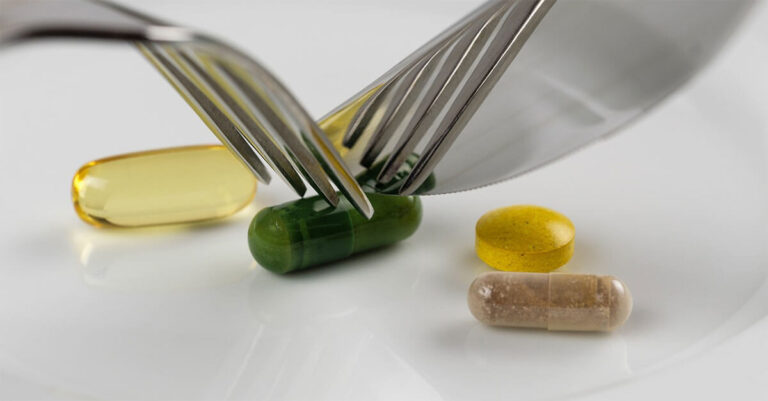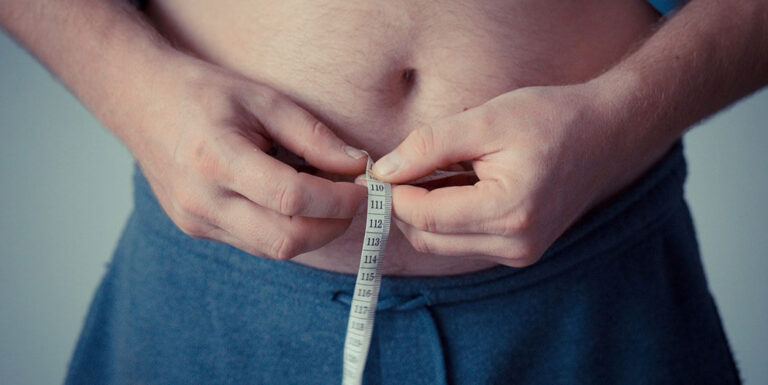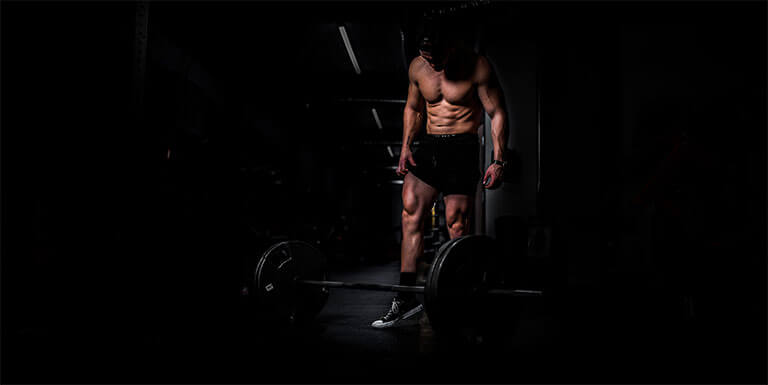Cardio While Bulking: Benefits and Guide
Cardio workouts are usually associated with weight loss. This makes people think they can’t perform cardio while bulking.
However, there are plenty of benefits associated with adding at least some light cardiovascular exercise into your routine. Doing this type of workout every few days or even once per week will help you build muscle mass, burn fat, increase endurance and boost metabolism! Cardio exercise also helps you stay fit overall which means better health for years to come!
If you are looking for ways how you can include cardio in your bulking program, then this article is for you! It contains information about the benefits of doing cardio while bulking as well as tips for making sure you get maximum results from each workout session.
In this article, you will learn:
- Is It Okay To Do Cardio While Bulking?
- 10 Benefits of Doing Cardio While Bulking
- Potential Disadvantage of Doing Cardio While Bulking
- What Kind of Cardio To Do When Bulking Up?
- How Much Cardio Should You Do When Bulking?
- How To Best Incorporate Cardio While Bulking
Is It Okay To Do Cardio While Bulking?
Many people believe that cardio is not okay while bulking and it should only be performed during a cutting phase.
It’s true that cardio is amazing for increasing metabolism and improving cardiovascular health which can help aid in fat loss.
However, while bulking, it is also perfectly acceptable to perform cardio, as long as you still eat at a slight caloric surplus, and prioritize your weight training workouts. Moreover, as you will soon find out weight training can actually benefit from cardio.
10 Benefits of Doing Cardio While Bulking
Let’s take a closer look at the main benefits associated with cardio while bulking.
1. Decreases Recovery Time Due to Blood Flow
Cardiovascular exercise can be beneficial for people who are interested in adding muscle mass in an optimal way. Cardio increases blood flow to the muscle helping transport necessary nutrients, clearing out metabolic by-products that contribute to muscle soreness.
This way, helping you recover from your workouts faster.
Therefore, low-intensity types of cardio such as some walking can speed up your muscle recovery process. It’s important to note that it still needs to be done with caution not to add additional stress to the already sore muscle groups.
2. It Burns Calories and Helps Manage Body Fat Levels
When it comes to minimizing fat gains during a lean bulk or clean bulk diet, then controlling your overall calorie and macronutrient intake is the most important factor.
However, adding a bit of cardio to your routine can also help out, especially if you want to keep your abs while bulking.
Especially if you are still feeling super hungry even when eating at a caloric surplus. By doing some cardio, you can allow yourself to consume more food throughout the day.
3. Improves Cardiovascular Health
When it comes to improving cardiovascular health, doing cardio is one of the most effective things that you can do.
Cardio helps to improve heart health by strengthening your heart muscle and increasing your overall aerobic fitness.
In fact, a recent study found that there is a constant reduction of risk in regards to cardiovascular health issues with higher volumes of moderate to vigorous physical activity (1). This suggests that people with cardiovascular disease problems should be encouraged that “more is better” regarding moderate to vigorous physical activity.
4. Improves Nutrient Partitioning
When you do cardio while bulking, you may improve your nutrient partitioning.
Nutrient partitioning means where the calories end up going when you are in a caloric deficit (lean muscle mass or body fat), as well as where they come from when you are in a caloric deficit (lean muscle mass or body fat).
5. Helps Increase Endurance and Work Capacity
Performing some cardio during a bulk can help you increase your level of conditioning which should also increase your endurance and the overall work capacity.
In other words, this means that you will be able to do more work without getting exhausted.
You have probably noticed (I definitely did!) that when you skip on doing cardio during a bulk, doing a compound exercise for multiple reps becomes significantly more difficult.
Especially everything that is above 12 reps.
You’d think the weight was not that heavy, but you’d be exhausted and out of breath.
That’s a sign that you lack conditioning and cardio, which is something you can easily improve on if you start doing cardio.
I’m not saying cardio should be the main focus of your bulking phase, but adding a few sessions per week will definitely do you good!
6. Improves Insulin Sensitivity
During a bulking phase, you are required to stay in a continuous caloric surplus. This increases the likelihood of you developing some level of insulin resistance. By developing insulin resistance, you decrease your ability to absorb all of the beneficial nutrients that you are consuming.
However, performing cardio during your bulking phase can help improve your insulin sensitivity and reduce the likelihood of developing this issue.
Furthermore, studies show cardio is effective in reducing insulin resistance and body fat among overweight and obese women (2). Another review paper has concluded that physical training can be concluded important if not essential in the prevention and treatment of insulin insensitivity (3).
7. Helps You Sleep Better
Not getting enough sleep can be a real problem, especially when your goal is building muscle mass.
But did you know that just a single 30-minute session may help you with pre-sleep anxiety and as a result help fall asleep faster and sleep longer in total (4)?
Moreover, studies show that moderate aerobic exercises, for example, jogging, walking, cycling, etc., help reduce anxiety and improve sleep in patients with chronic primary insomnia (5). But these effects are stronger when you follow moderate aerobic exercise long-term.
So if you’re struggling with getting quality sleep, consider adding cardio to your routine.
8. Eases Stress and Helps You Be in a Better Mood
Somewhat related to the previous point since it helps you sleep better, cardio could also help you be in a better mood.
You see, when you do exercise, your body releases chemicals called endorphins (6). These chemicals interact with the receptors in your brain that helps reduce the perception of pain and trigger a positive feeling in the body.
In addition, in one study, a group of college joggers were asked how they felt after a 20-minutes of jogging at different intensities (7). The results showed that regardless of the intensity, participants reported that they “felt better” after the exercise session.
9. Improve Appetite
In most cases, people with a large appetite would incorporate a mix of low and high-intensity forms of cardio in order to have a higher daily caloric intake.
However, from my experience, people with a low level of appetite could also benefit from regular cardio sessions. Low-intensity forms of cardio like walking could have a reverse effect of increasing appetite.
I suggest you experiment with both low and higher intensity forms of cardio depending on your appetite level.
If doing cardio makes you more hungry, and it’s not what you wanted to achieve, consider doing a shorter high-intensity form of cardio like HIIT. You might also think about decreasing the frequency of these sessions.
However, if you want to achieve the opposite – increase your appetite. Try doing lower intensity forms of cardio, more frequently and see how it makes you feel.
10. Makes Cutting Easier
At some point, you will want to transition into a cutting phase.
If you don’t perform any cardio during your bulking phase, it’s going to be a challenge when you transition into a cut and decide to do cardio.
Long periods without doing any cardio will cause your level of conditioning to drop significantly. And it takes time to get it back up after a long break.
Therefore, from this perspective, doing some cardio during your bulking phase will be beneficial.
Potential Disadvantage of Doing Cardio While Bulking
One potential disadvantage of doing cardio while bulking is that excessive amounts could impair muscle growth.
This could happen in the following scenarios:
- If you do excessive amounts of cardio and start prioritizing cardio over weight training workouts
- If you do too much cardio and accidentally put yourself in a caloric deficit. This may cause your body to start burning off muscle tissue in order to preserve energy. When you’re trying to bulk up, this isn’t what you want.
Cardio should not be performed on a daily basis, but rather in moderation.
Additionally, make sure to put yourself in a small caloric surplus, and consume the appropriate macros during a lean bulk.
What Kind of Cardio To Do When Bulking Up?
Some of the most popular forms of cardio when bulking up are steady-state or low-intensity cardio, moderate-intensity cardio, high-intensity interval training (HIIT), as well as fasted cardio.
So which is the best one for bulking? Let’s find out!
No Cardio While Bulking
Performing no cardio during a bulk is, of course, possible but I don’t recommend it.
Remember, cardio is good for you and provides some great benefits, like the ones I mentioned above.
I strongly encourage you to take at least start small and simply do some form of cardio daily even if it’s low intensity like walking. As you get used to doing some cardio you can gradually increase the intensity and/or duration of your cardio workouts.
Steady-State Cardio
A steady-state or low-intensity form of cardio is done at a continuous, steady and/or low-medium level of intensity for an extended period of time. About 20-30 minutes although this can vary depending on your goals and preferences.
In most cases, 15-20 minutes is recommended for beginners and from 25 up to 90 minutes for advanced athletes.
Some people like to do steady-state cardio post-workout because it takes away from their recovery and some prefer doing cardio first thing in the morning before breakfast.
It’s fairly easy to stick to a steady-state cardio training program since there are so many activities to choose from. Anything from walking on a treadmill or walking outside to biking or an elliptical is a good way to implement a cardio workout into your program.
In my opinion, such a form of cardio is one of the most optimal ones for most people looking to bulk up without sacrificing their gains. The lack of intensity will help you maintain your muscle mass, as well as burn fat in the process. If done right, this type of cardio can be an extremely effective way of reaping the benefits of cardio without sacrificing muscle.
One thing I observed from my own experience is that at times, low to medium intensity cardio can increase the level of appetite. So, if you struggle to consume enough calories during a bulk, this may help you consume your daily calorie target.
HIIT Cardio
You’ve probably heard of HIIT cardio before.
The acronym stands for high-intensity interval training (HIIT).
HIIT implies alternating periods of high-intensity exercise with less-intense recovery periods. A typical HIIT workout lasts 10 – 30 minutes and takes place inside a gym setting on cardio equipment like an elliptical machine or stationary bike.
Although the actual HIIT activity, as well as the place you do the workout, can vary. For example, same as you would do in the gym you can sprint, jump rope, bike, or perform a mix of bodyweight exercises outdoors.
A typical HIIT workout using a treadmill or a stationary bike could include 20-60 seconds of sprinting or biking (depending on which you choose) at the maximum pace. Followed by jogging or biking at a low speed for several minutes. You can think of this as one “round” or “set”. During a single workout session, you could perform 4 – 8 of these “rounds” or “sets”.
One randomized controlled trial has shown that in comparison to twice as much moderate-intensity exercise, high-intensity interval training provides similar benefits (8). Thus, it can be considered a more time-efficient way to exercise.
When it comes to bulking, HIIT workouts do not necessarily hinder muscle growth, given that you don’t overdo it and keep weight training your primary focus.
From my personal experienced I noticed that HIIT workouts not only burn calories and allow me to consume more calories throughout the day but also help suppress appetite. So, if you are like me, and have a large appetite even during a bulk, consider incorporating HIIT workouts into your training routine and see how you feel.
Fasted Cardio
Fasted cardio is done on an empty stomach. Some people believe that fasted cardio can help them burn more fat, but this is a myth.
Previous research showed that cardio that is done in the fasted state burns more stored body fat for fuel compared to cardio performed after you eat a meal containing carbohydrates (9).
However, a more recent study shows that your total daily calorie expenditure, when following a cutting diet, is pretty much identical no matter whether or not you’ve eaten before your cardio workout (10).
So, this means fasted cardio won’t necessarily help you lose fat.
Although it’s worth noting research showing that cardio performed in a fasted state may have greater appetite suppressant effects in comparison to performing cardio after consuming some food (11).
To conclude, fasted cardio does not help you lose more body fat. It also does not make sense to perform fasted cardio while bulking if you are already struggling to reach your daily caloric intake goals due to its appetite suppressant effects.
However, if you are always hungry, even during a bulking phase, then I would suggest you perform fasted cardio for a few weeks and see how it feels.
How Much Cardio Should You Do When Bulking?
While cardio does have its benefits, it’s important to do it in the right amounts.
Too much and you could risk losing muscle mass, too little and you won’t see the benefits you’re hoping for.
The Department of Health and Human Services recommends getting at least 150 minutes of low-moderate aerobic activity or 75 minutes of vigorous aerobic activity per week, or a mix of both (12).
In other words, you could do:
- 30-minute sessions, 4-5 times per week where you perform low-moderate intensity aerobic exercise (like walking, jogging, biking, etc.)
- 20-30 minute HIIT workouts, 2-3 times per week
- A mix of both, for example, two 30-minute low-moderate intensity aerobic exercise sessions and a few 20-30 minute HIIT workout sessions per week
This will allow you to reap the previously mentioned benefits of cardio when bulking.
How To Best Incorporate Cardio While Bulking
Lastly, I would like to discuss things to keep in mind when incorporating cardio into your bulking protocol.
Prioritize Strength Training
First of all, when you are bulking, make sure that strength training is your top priority.
Put otherwise, most of your time should be spent on weight training, focusing on progression in the main compound exercises like the squat, bench press, shoulder press and deadlift.
Cardio should only make up approximately 20-30% of your overall time exercising throughout the week.
Furthermore, I recommend doing cardio after you have completed your weight lifting workout or scheduling cardio workouts on separate days.
Monitor Caloric Intake and Calorie Expenditure
It is also very important to monitor your caloric intake and calorie expenditure when you are trying to bulk up.
This will help you make sure that you are not overeating or undereating and that you are getting the most out of your resistance training and cardio workouts.
Remember that as per nutrition recommendation for bodybuilding, your target weight gain during a lean bulk should be about 0.25 – 0.5% of body weight per week if you are a novice/intermediate athlete (13). However, if you are an advanced athlete, then the target should be 0.15 – 0.25% of body weight gain per week or around 0.5 – 1% per month.
If you notice that you cannot reach the target weekly weight gain or even start losing weight, then try increasing your caloric intake by 50-100 calories and monitor the changes on the scale.
You could also consider lowering the number of cardio sessions per week, especially if you have a physically active job.
On the other hand, if you are gaining too much bodyweight then you should decrease your daily caloric intake or increase the time doing cardio. But be careful with doing the latter, remember that progressing in weight training should still be your main focus.
Do the Right Kind of Cardio for You
Lastly, make sure to pick the right kind of cardio for you, so that you can stick to it.
If you despise running on a treadmill (just like me), then don’t do it! There are plenty of cardio exercises that you can enjoy, so find your cardio motivation.
There are many options to choose from, for example:
- Swimming
- Cycling
- Walking
- Playing your favorite sports like football, basketball, etc.
So, choose an activity that you enjoy so you’ll be more likely to stick with it.
Final Thoughts
To this day, there are a lot of myths about cardio while bulking, but really the only one you need to worry about is that cardio will stop muscle gain.
This isn’t true!
In fact, if done correctly it can actually provide various benefits. The key is knowing what kind of cardio and how much to do in order for it not to interfere with your muscle growth.
In this article, I have outlined the main benefits of cardio and some basics so you can get started today. If cardio isn’t incorporated into your workout routine at all, start by doing some easy cardiovascular activity after each weight training session. After a few weeks of incorporating this new habit into your routine, you’ll get used to it and start noticing the benefits.
References
1. Bakker EA, Lee Dc, Hopman MTE, Oymans EJ, Watson PM, et al. Dose–response association between moderate to vigorous physical activity and incident morbidity and mortality for individuals with a different cardiovascular health status (2021). Retrieved from https://journals.plos.org/plosmedicine/article?id=10.1371/journal.pmed.1003845
2. Le S, Mao L, Lu D, Yang Y, Tan X, Wiklund P, Cheng S, et al. Effect of aerobic exercise on insulin resistance and central adiposity disappeared after the discontinuation of intervention in overweight women (2016). Retrieved from https://www.sciencedirect.com/science/article/pii/S2095254616300084
3. Borghouts LB, Keizer HA. Exercise and insulin sensitivity: a review (2000). Retrieved from https://pubmed.ncbi.nlm.nih.gov/10683091/
4. Herring MP, O’Connor PJ, Dishman RK. The effect of exercise training on anxiety symptoms among patients: a systematic review (2010). Retrieved from https://pubmed.ncbi.nlm.nih.gov/20177034/
5. Passos GS, Poyares D, Santana MG, Garbuio SA, Tufik S, Mello MT. Effect of acute physical exercise on patients with chronic primary insomnia (2010). Retrieved from https://pubmed.ncbi.nlm.nih.gov/20572421/
6. Bruce DF, Bhandari S. Exercise and Depression (2020). Retrieved from https://www.webmd.com/depression/guide/exercise-depression
7. Berger BG, Owen DR. Relation of low and moderate intensity exercise with acute mood change in college joggers (1998). Retrieved from https://pubmed.ncbi.nlm.nih.gov/9842612/
8. Kong Z, Fan X, Sun S, Song L, Shi Q, Nie J. Comparison of High-Intensity Interval Training and Moderate-to-Vigorous Continuous Training for Cardiometabolic Health and Exercise Enjoyment in Obese Young Women: A Randomized Controlled Trial (2016). Retrieved from https://pubmed.ncbi.nlm.nih.gov/27368057/
9. Horowitz JF, Mora-Rodriguez R, Byerley LO, Coyle EF. Lipolytic suppression following carbohydrate ingestion limits fat oxidation during exercise (1997). Retrieved from https://pubmed.ncbi.nlm.nih.gov/9357807/
10. Schoenfeld BJ, Aragon AA, Wilborn CD, Krieger JW, Sonmez GT. Body composition changes associated with fasted versus non-fasted aerobic exercise (2014). Retrieved from https://pubmed.ncbi.nlm.nih.gov/25429252/
11. Deighton K, Zahra Jc, Stensel DJ. Appetite, energy intake and resting metabolic responses to 60 min treadmill running performed in a fasted versus a postprandial state (2012). Retrieved from https://www.sciencedirect.com/science/article/abs/pii/S0195666312000839
12. Laskowski ER. How much should the average adult exercise every day? (2021). Retrieved from https://www.mayoclinic.org/healthy-lifestyle/fitness/expert-answers/exercise/faq-20057916
13. Iraki J, Fitschen P, Espinar S, Helms E. Nutrition Recommendations for Bodybuilders in the Off-Season: A Narrative Review (2019). Retrieved from https://www.ncbi.nlm.nih.gov/labs/pmc/articles/PMC6680710/






